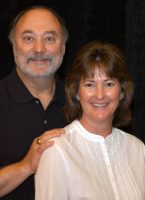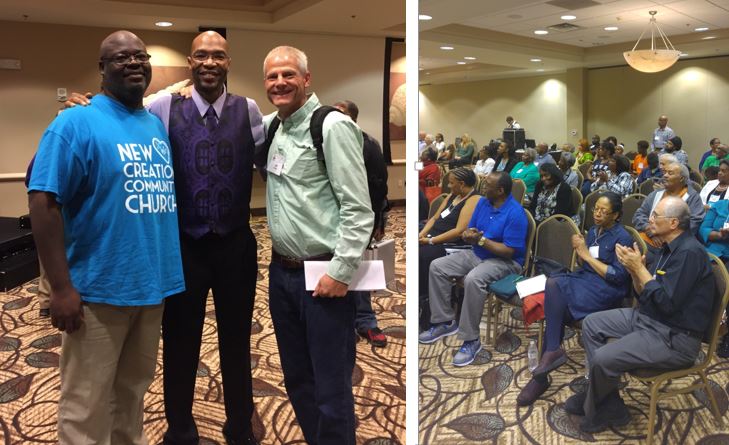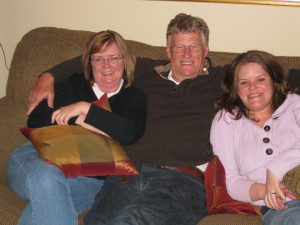Dear Brothers and Sisters,

Shakespeare’s line from Hamlet, “The lady doth protest too much, methinks,” often is quoted to describe someone who seeks to convince others of something that is not true. The line comes to mind when I hear atheists protesting claims that atheism is a religion. In support of their protests, some atheists offer these syllogistic comparisons:
- If atheism is a religion then bald is a hair color. While this may sound almost borderline profound, all it does is compare a false statement with a category error. Baldness has nothing to do with hair color. Certainly bald is not a color, but since atheism exists in some sense, it may very well have a color like other religions even if it has a unique color, as does Christianity. Moreover, I’ve never met a bald person who doesn’t have a hair color. An absence of hair on the head does not equate with the absence of a hair color.
- If atheism is a religion then health is a disease. Once again, this may at first glance sound like a valid syllogism but it is nothing more than doubletalk that once again compares a falsity with a category error, a logical error. I should also note that studies have shown that belief in God correlates not only to reports of improved mental health among the faithful, but also better physical health compared to nonbelievers. In fact, nearly 350 studies of physical health and 850 studies of mental health that have used religious and spiritual variables have found that religious involvement and spirituality are associated with better health outcomes. [1]
- If atheism is a religion, then abstinence is a sexual position. Once again juxtaposing two thoughts doesn’t mean that they are real proof of something. One can go on and on composing such nonsensical statements. Pointing out logical errors does not tell us what is true in fact.
The US Supreme Court has ruled on more than one occasion that atheism is to be treated as equivalent to a religion under the law (i.e. it is a protected belief system at the same level as any religion). Atheists believe, of course, that there are no gods. As such, atheism is a belief about gods and thus qualifies as a religion, much in the same way Buddhism is described as a religion.
Religious views about God fall into three categories: monotheistic (Judaism, Christianity, Islam), polytheistic (Hinduism, Mormonism), and nontheistic (Buddhism, atheism). One might place atheism in a fourth category by saying that it’s antitheistic. In Atheism as a Religion: An Introduction to the World’s Least Understood Faith, Mike Dobbins highlights ways that atheism mirrors religion; here is an excerpt (from The Christian Post):
One sacred symbol to atheists is the ‘A’ that symbolizes atheism. Three ‘A’ symbols are prominent in atheism. One ‘A’ symbol was created in 2007 by Atheist Alliance International and has a circle around it. The circle is meant to symbolize the unity of all atheists and the inclusion of all other atheist symbols. As you can tell, not only are these symbols for atheism, there is atheist religious symbolism within them that only atheists or those who study atheism know….
Many atheists demonstrated just how sacred the symbol ‘A’ is to them in the Christmas of 2013. Since my hometown city of Chicago allows a Hanukkah Menorah and Nativity scene to display on government property during the holiday season, the atheists asked to display their own religious symbol so the government wouldn’t give the appearance to be endorsing one religion or the other. The monument the Freedom From Religion Foundation chose was a giant… letter ‘A’ which stood 8 feet tall and lit up red at night for all to see. Countless atheists showed respect for the ‘A’ by making a pilgrimage to the site where the ‘A’ was displayed and having their picture taken with the ‘A’ which I’m sure will be kept as a cherished keep sake for many. Still, the giant red A was not enough. They also advocated for their atheist faith by erecting a sign that read, “There are no gods, no devils, no angels, no heaven or hell. There is only our natural world. Religion is but myth and superstition that hardens hearts and enslaves minds.”
The Debunking Atheists blog has a helpful list of atheism’s key views that clearly are religious in nature. Here is an edited version of that list:
- Atheists have their own worldview. Materialism (the view that the material world is all there is) is the lens through which atheists view the world. Far from being the open-minded, follow-the-evidence-wherever thinkers they claim to be, they interpret all data ONLY within the very narrow worldview of materialism. They are like a guy wearing dark sunglasses who chides all others for thinking the sun is out.
- Atheists have their own orthodoxy. Orthodoxy is a set of normative beliefs acceptable to a faith community. Just as there are orthodox Christian beliefs, there is an atheist orthodoxy as well. In brief, it is that EVERYTHING can be explained as the product of unintentional, undirected, purposeless evolution. No truth claim is acceptable if it cannot be subjected to scientific scrutiny and empirical confirmation.
- Atheists have their own brand of apostasy. Apostasy is to abandon one’s former religious faith. Antony Flew was for many years one of the world’s most prominent atheists. And then he did the unthinkable: he changed his mind. You can imagine the response of the “open-minded, tolerant” New Atheist movement. Flew was vilified. Richard Dawkins accused Flew of “tergiversation.” It’s a fancy word for apostasy. By their own admission, then, Flew abandoned their “faith” [and became a kind of Deist].
- Atheists have their own prophets: Nietzsche, Russell, Feuerbach, Lenin and Marx.
- Atheists have their own messiah: Charles Darwin, who in their view drove the definitive stake through the heart of theism by providing a comprehensive explanation of life that never needs God as a cause or explanation. Daniel Dennett has even written a book seeking to define religious faith itself as merely an evolutionary development.
- Atheists have their own preachers and evangelists: Dawkins, Dennett, Harris and Hitchens.
- Atheists have faith. Though their writings ridicule faith (Harris’s book is called The End of Faith), atheism is a faith-based enterprise. Because the existence of God cannot be proven or disproven, denying it takes faith in their own scientific powers of observation and rationality. Atheistic evolution has no explanation for why our universe is orderly, predictable, measurable. It has no rational explanation for why there is such a thing as rational explanation. There is no accounting for the things they hope you won’t ask: Why do we have self-awareness? What makes us conscious? From what source is there a universal sense of right and wrong? How do we know that there is no life after death? How do we know that nothing more than material things exist? How do we know that the only things that exist are (conveniently) those things that can be known by our current scientific-empirical methods? Atheists take such unexplained things by faith—they assume things without having a sound rational or empirical basis.
Contrary to the protestations of atheists, the reality is that their belief system is a faith-based enterprise with practices and beliefs just like other religions. How ironic that atheists, insisting that atheism is not a religion, rail against other religions, even setting up competing displays next to displays from other religions.
I hasten to add, though, that some Christians make essentially the same mistake when they rail against other religions (even other forms of Christianity). We Christians should keep in mind that our faith is not a mere religion that needs to be asserted or defended. Instead, Christianity, at its core, is a living relationship with the Triune God: Father, Son and Spirit. Our calling as Christians is not to push another belief system on the world, but to participate with God, as his ambassadors (2 Corinthians 5:18-21), in his ongoing ministry of reconciliation—letting others know the good news (gospel) that they are forgiven, redeemed, and loved by a God who desires a relationship of trust (faith), hope and love with all people.
Loving that authentic Christianity is not a religion but a relationship,
Joseph Tkach
_______________
[1] “Religious involvement, spirituality, and medicine: implications for clinical practice,” Mayo Clinic Proceedings vol. 76:12, pp. 1225-1235. Retrieved from Mayo Clinic Proceedings website on July 20, 2014.







